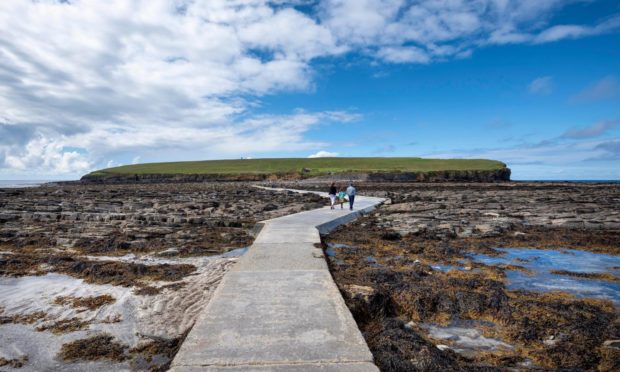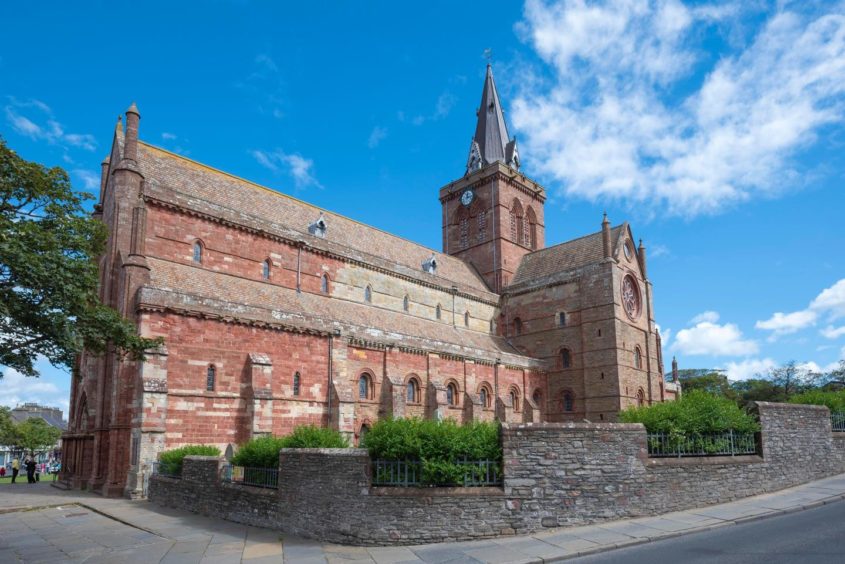Today I am making my way to Orkney to become a pilgrim. Next week I will walk the St Magnus Way – a new pilgrim route established on the islands.
St Magnus Way is a 55 mile long pilgrimage trail that was established in 2017 to mark the 900th anniversary of the death of St Magnus, Orkney’s patron saint. It roughly follows the route from the place on Egilsay where Magnus was martyred to Birsay where he was buried, and then across the mainland to Kirkwall Cathedral, where the remains of Magnus were carried to and where they remain to this day.
I am taking with me the kinds of things needed for a long walk across varied landscapes. My packing has made me wonder what else I might need. What marks the difference between a walker and a pilgrim?
The further the journey, the greater the benefits
Through most of the Middle Ages everyone would have known what it meant to be a pilgrim. In fact, most people would have made some sort of pilgrimage in their lives.
Some pilgrim journeys were short, made in a day or so to a local holy site. Others took months, as bands of pilgrims travelled across half of their known world to Rome or Jerusalem or Compostela. The further the journey, the greater the benefits.
These were not just ordinary travels, but intentional journeys with a religious purpose and motivation. And it was not just about the journey, however interesting, but what was encountered at the end point.
For each pilgrim, the trip was related to a serious matter in their lives. People became pilgrims in order to be healed from diseases, or to pray for family members who were sick. They were pilgrims because they wanted to atone for the wrongs done in life and to receive a new start.
Pilgrims often had their minds on heaven, and the end point of their journey would be a place where they thought heaven and earth met – the place where the earthly remains of a saint could be found.
Finding new perspectives in new people
Now the Scottish Reformation might have done for all of this, yet there can still be within many of us a desire to walk and think; to take time to discover what we can about ourselves and the ultimate questions of life. There is something about the rhythm of walking that enables things that are buried within us to rise to the surface.
For those who are religious (and there are pilgrims in every faith) what we find within ourselves is held in prayer. Over the last couple of decades there has been a rapid rise in the number of pilgrims across the world, with people of all faiths and none walking the pilgrim routes again.
There is something about the rhythm of walking that enables things that are buried within us to rise to the surface
Another aspect of pilgrimage was that for various reasons, including personal safety, participants rarely travelled alone. As it was in the past, so it is today. I will be walking as part of a small group. Some in the group I know well, others I have not met at all.
I hope I will be a good pilgrim and know that those who I walk with are a gift to me, and me to them. In our sharing of conversations, in the telling of stories, in the careful listening that comes when we really pay attention to each other, I hope to find encouragement and new perspectives, friendship and laughter.
Laying down the weight of responsibilities
All of this will take time, and it is the time I am giving to this pilgrimage that seems like the most important thing. For a few days I can lay down some of the weight of the responsibilities I carry day by day in Aberdeen and be renewed on the rolling hills of Orkney. Now doesn’t this sound wonderful?
Maybe this is at the root of the contemporary growth in pilgrimages – that chance to be free, even if it is just for a little while. After months of lockdowns, my trip in the spring of this year feels like a gift, one that everyone should have.
As the days warm and lengthen, what a wonderful time for us all to get out and walk, especially with others. And as we go there will be so much we can be learning about ourselves and the world.
One thing that marked pilgrims – they did not return home unchanged. I hope this is true for me.
The Rt Rev Anne Dyer is Episcopalian Bishop of Aberdeen and Orkney and Scotland’s first female bishop

